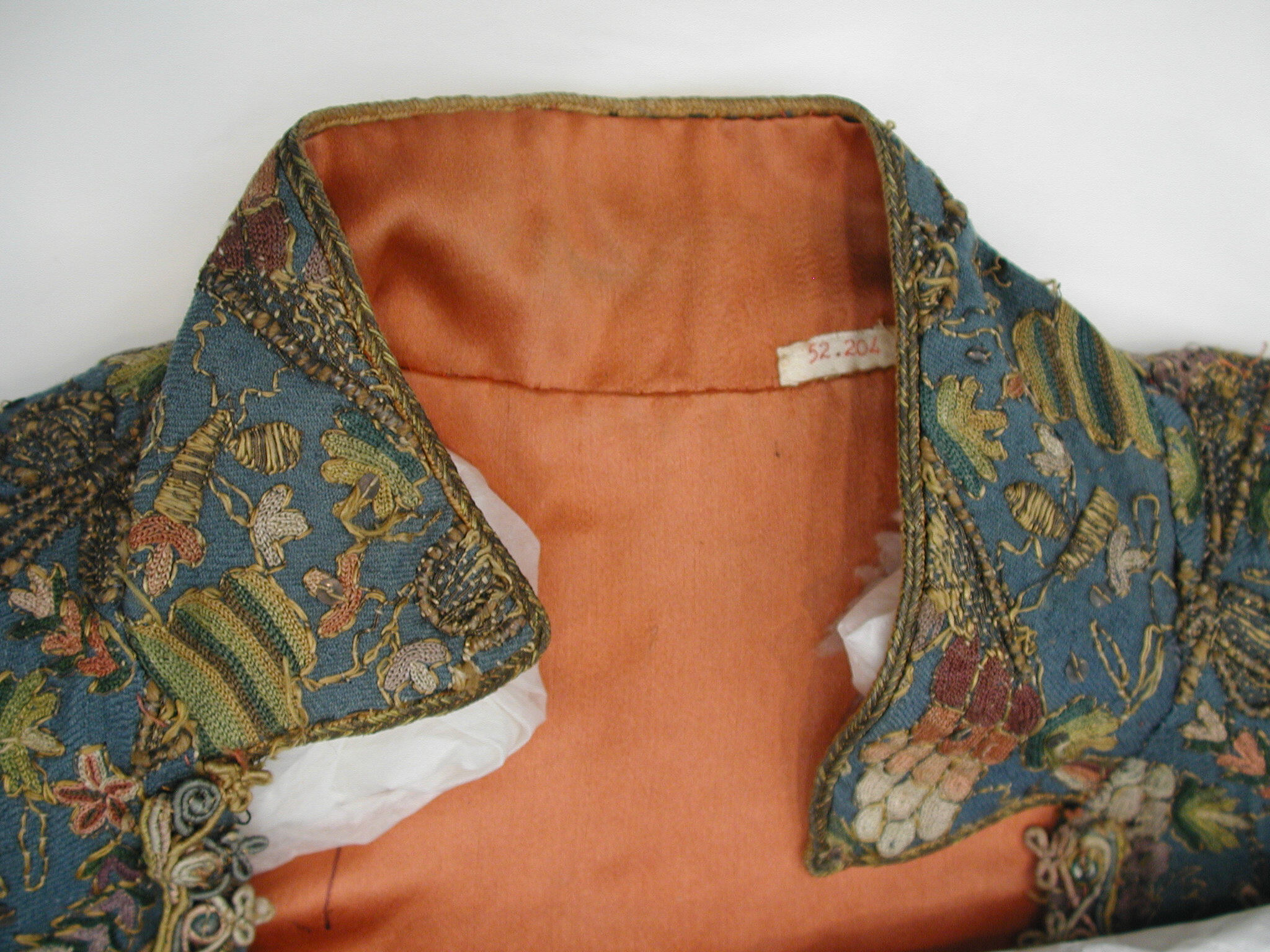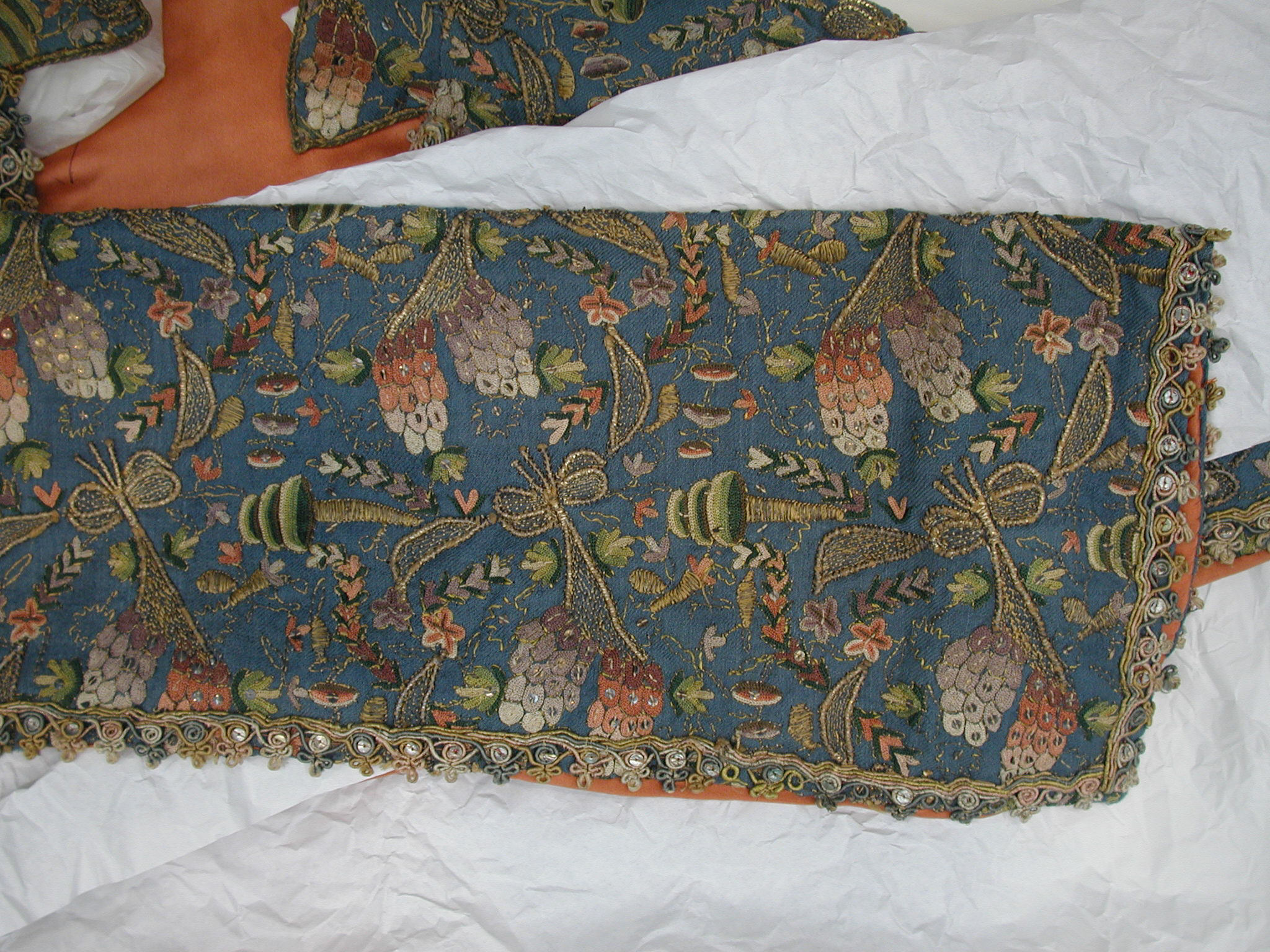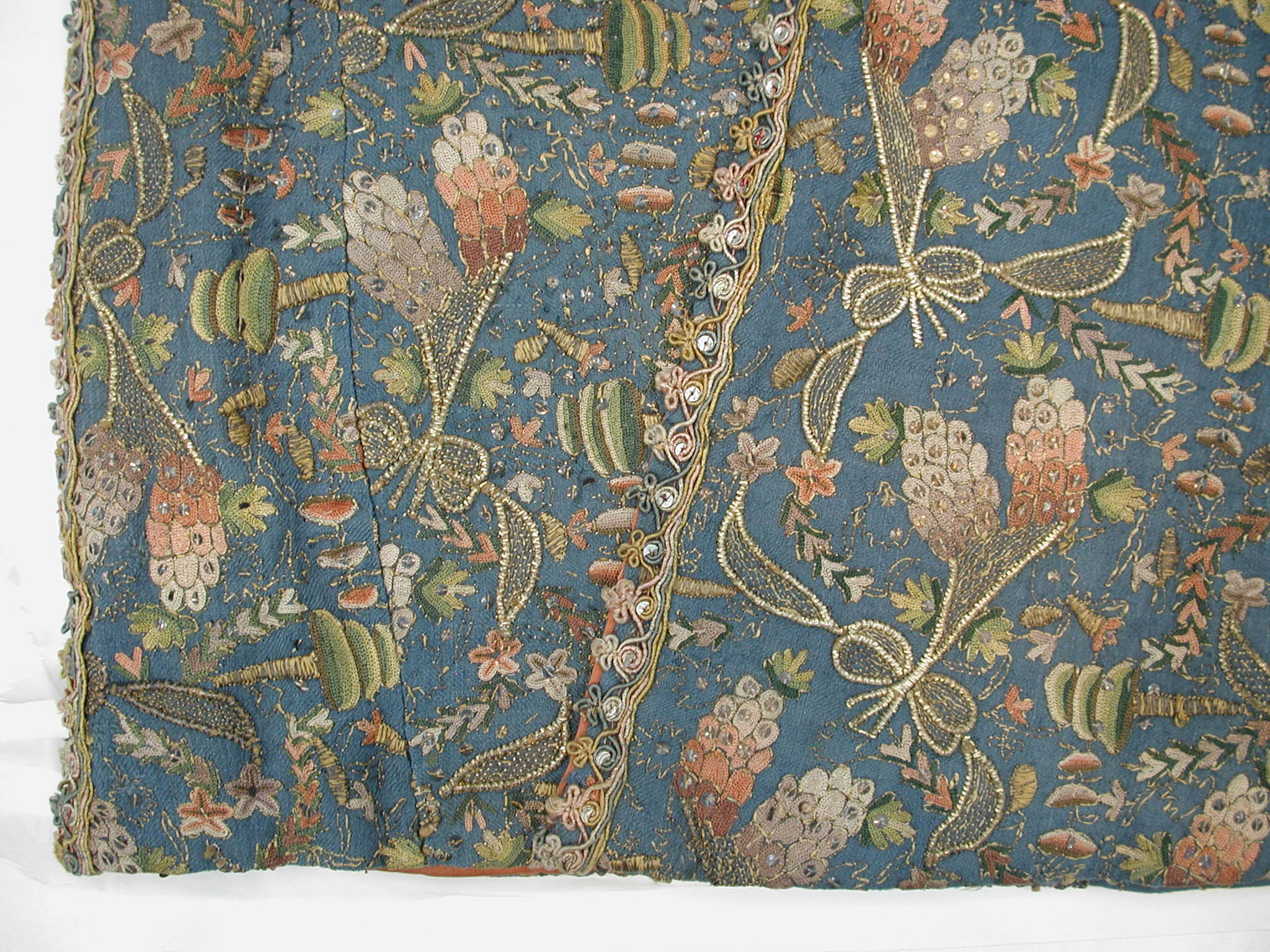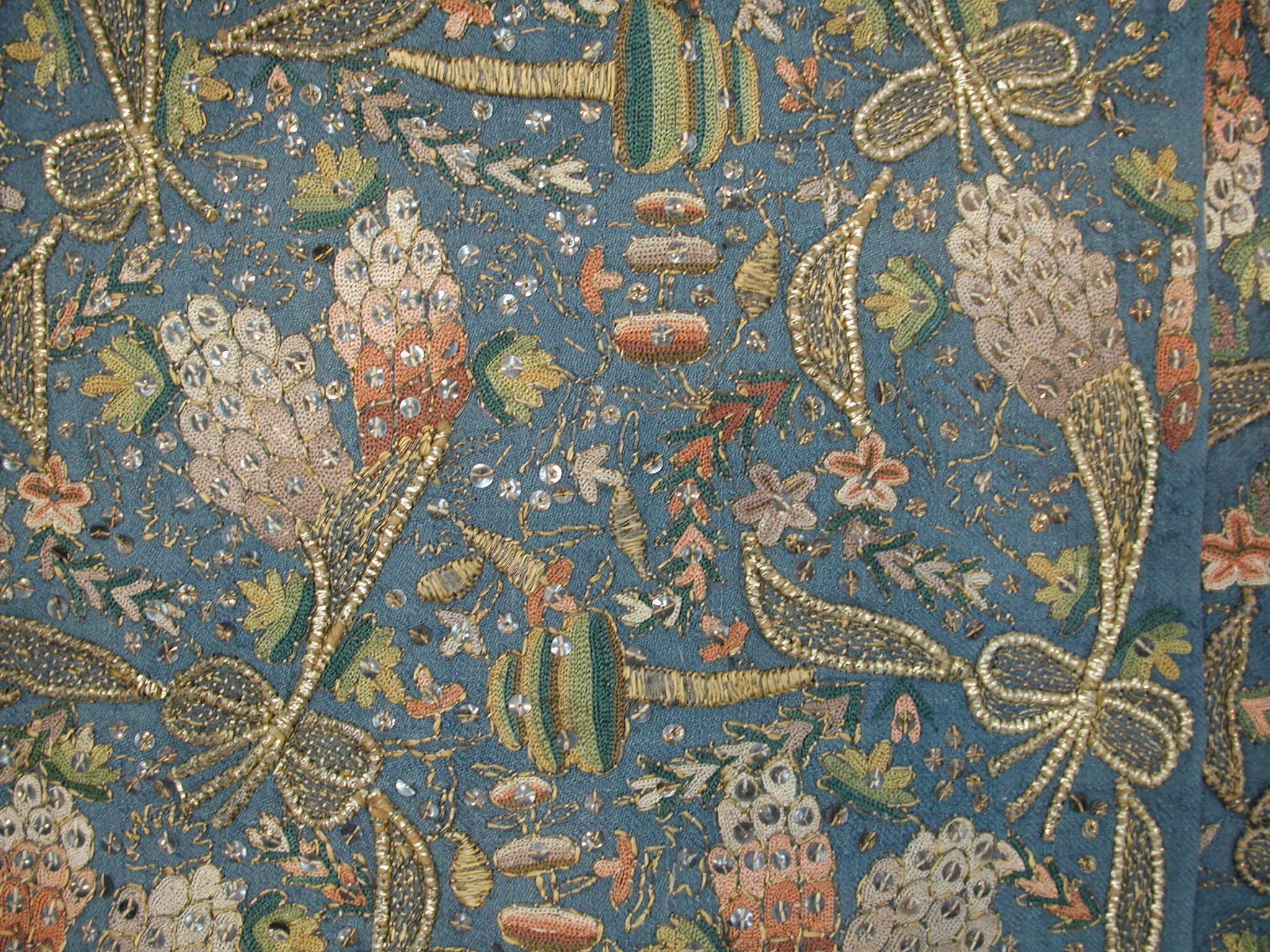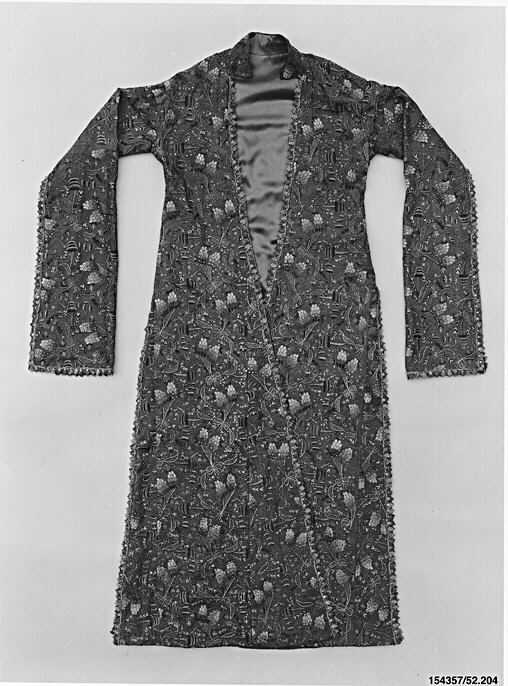Entari
Not on view
The entari, or robe, was the primary garment of indoor dress for women in the Ottoman Empire for several centuries. Worn over an undershirt (gömlek) and baggy trousers (şalvar), the entari was open down the front, held closed by a belt or sash. While the proportions of the garment changed over time, the basic construction as demonstrated in this example, the oldest in the museum’s collection, remained the same. A single loom width of fabric comprises the body of the entari, with no shoulder seam. Long triangular pieces of fabric (peş in Turkish) are sewn to each side and the front openings to add width to the garment. While entaris from earlier centuries were closed at the sides, by the eighteenth century when this garment was made, it was customary to leave the side seam open near the waist, revealing the şalvar and gömlek beneath. Similarly, the long narrow sleeves were open until the elbow, allowing the extra sleeve length to fall away from the arm. The sleeves, front and sides openings are all edged with a narrow trim made up of several shades of metallic-colored thread and small silver-colored sequins. The embroidered wool fabric, known as hüseyni or tepebaşı, after the Istanbul neighborhood where the fabric was made, has been heavily embroidered before the garment was assembled with a multi-colored design of floral elements and other motifs executed in silk and metal-wrapped thread.
Due to rights restrictions, this image cannot be enlarged, viewed at full screen, or downloaded.
This artwork is meant to be viewed from right to left. Scroll left to view more.


